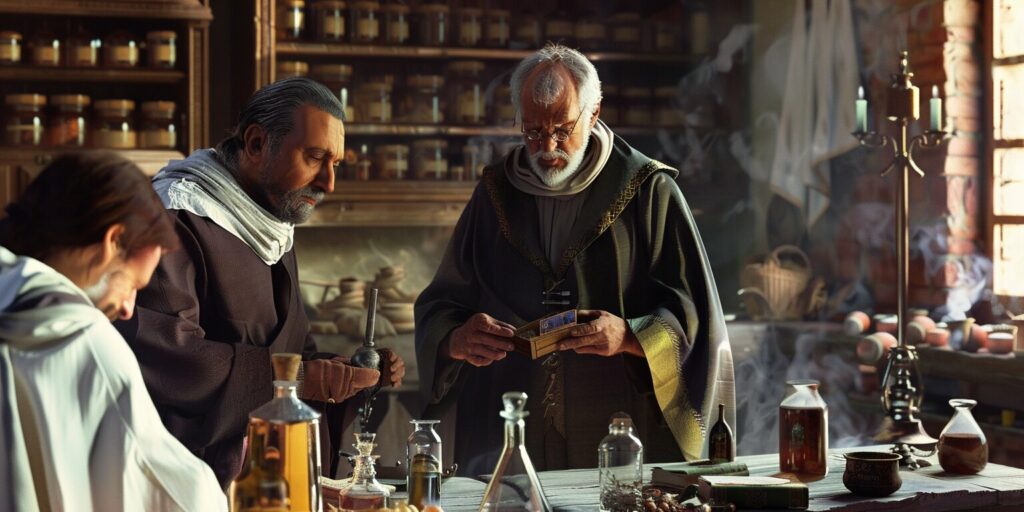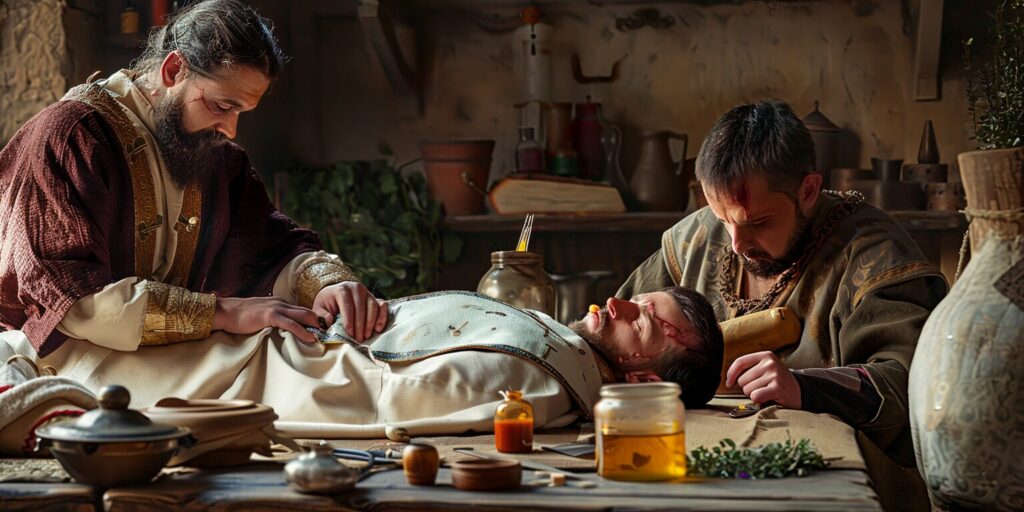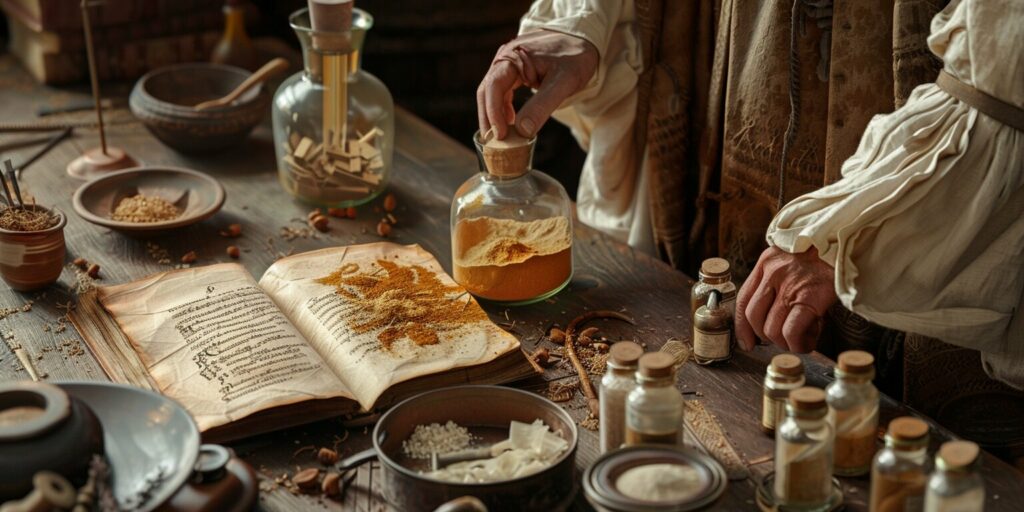Embark on a captivating journey through the ancient world of medieval medicine, where the hidden history of herbal remedies, monastic cures, and the influence of the four humors and astrology on healing practices come to life. From medical knowledge’s evolution to the Black Death’s profound impact, this article will explore the fascinating landscape of medieval medicine and its lasting legacy on modern healthcare.
Uncover the secrets of the past as we delve into the diverse medieval medicine treatments and practices that defined healthcare in medieval times. Discover the intricate balance between traditional wisdom and emerging scientific understanding that shaped the Middle Ages and medicine in the Middle Ages, highlighting the enduring legacy of Greek medicine and its influence on the practice of medicine throughout history. Prepare to be transported to a time when the mysteries of the human body were unraveled through a unique blend of spiritual, philosophical, and empirical approaches.
Understanding Medieval Medicine
The practice of medicine in medieval times was a complex and ever-evolving field, shaped by the cultural, social, and intellectual landscape of the Middle Ages, and is an important aspect of the history of medicine, reflecting the challenges and advancements faced in the quest to understand and heal the human body. From the early to the late Middle Ages, the landscape of medieval medicine underwent a remarkable transformation, reflecting the shifting trends and advancements in medical knowledge and practices.
Evolution of Medicine in the Middle Ages
The foundations of medicine in medieval times were largely rooted in ancient Greek and Roman medical traditions during the early Middle Ages. Physicians and healers of this era sought to understand the human body and its ailments through the lens of the four humors—blood, phlegm, yellow bile, and black bile—and their balance within the individual. This holistic approach to healing would have a lasting impact on medieval medical practices.
As the Middle Ages progressed, the field of medicine witnessed a gradual renaissance, with the rediscovery and translation of influential works by Greek scholars, such as Galen and Hippocrates, marking a significant moment in the history of medicine and the practice of medicine rooted in ancient wisdom. This influx of ancient medical knowledge, particularly Greek medicine, helped to refine and expand the understanding of the human body, leading to advancements in areas like anatomy, pharmacology, and the treatment of diseases. This chapter of the history of medicine reveals the air of history surrounding the evolution of medical practices.
The Influence of Galen on Medieval Medical Practices
The Greek physician Galen’s theories and writings played a pivotal role in shaping the medical landscape of the Middle Ages. Galen’s comprehensive system of anatomy, physiology, and disease diagnosis became the foundation for medieval medical practices, with his works serving as the primary source of medical knowledge for centuries. The enduring impact of Galen’s ideas can be seen in the widespread adoption of the four humors theory and the use of bloodletting as a common disease and medical treatment in medieval times.
Role of Black Death in Shaping Medieval Medicine
The devastating outbreak of the Black Death in the 14th century had a profound impact on the field of medieval medicine. The plague’s rapid spread and high mortality rate challenged the existing medical theories and practices, leading to a renewed focus on understanding the causes and treatment of infectious diseases. This period saw the emergence of new medical techniques, such as the use of quarantine and the development of more effective diagnostic methods, which would lay the groundwork for the eventual transition to modern medicine.
Key Practices and Treatments
During the medieval period, the practice of medicine was heavily influenced by the concept of the four humors – blood, phlegm, yellow bile, and black bile. These fundamental elements were believed to govern the balance and well-being of the human body. Medieval doctors and physicians would often diagnose and treat patients based on the perceived imbalance of these four humors.

Concept of Four Humours in Medieval Healing
The theory of the four humors, originated by the ancient Greek physician Galen, was widely accepted and practiced throughout medieval Europe. Practitioners would attempt to restore the balance of these humors through various treatments, including bloodletting, purging, and the administration of herbal remedies, practices deeply rooted in the history of medicine and the holistic approach adopted in early medieval medicine. The goal was to bring the body back into a state of equilibrium, which was believed to be essential for good health and well-being, a concept deeply intertwined with the history of medicine and the holistic approaches developed during the medieval and Renaissance periods.
Antiseptic Techniques in Medieval Europe
While the concept of germs and infection was not yet fully understood, medieval physicians and surgeons did employ some primitive antiseptic techniques in their practices. This included the use of boiling water, vinegar, and certain herbs to clean wounds and prevent the spread of infection. Although these methods were not as effective as modern antiseptic practices, they demonstrated an early understanding of the importance of cleanliness in medical procedures, marking an important milestone in the development of the practice of medicine and the broader history of medicine.
Medieval Doctors: Skills and Responsibilities
Medieval doctors, often referred to as physicians or surgeons and engaging in the early medieval medicine practice, were responsible for a wide range of medical practices, from diagnosing and treating illnesses to performing complex surgical procedures, a testament to the multifaceted nature of medieval and renaissance medicine. These skilled professionals were required to deeply understand anatomy, herbal remedies, and the principles of the four humors. They also played a crucial role in addressing public health concerns, such as the outbreak of the Black Death, and in providing medical care to the general population during the Middle Ages, marking a notable chapter in the history of medicine where practitioners had to navigate through crises with limited resources.
Herbal Remedies and Other Remedies
During the medieval period, monasteries emerged as centers of herbal knowledge and medical expertise, playing a crucial role in the development of medieval medicine. Monks and nuns within these sacred institutions meticulously cultivated and studied a vast array of medicinal herbs, using their findings to create a wide range of herbal remedies to treat various ailments.
Monasteries as Centers of Herbal Medicine
The monasteries of medieval Europe were not only havens for spiritual contemplation but also hubs of medical innovation, playing a significant role in the history of medicine and the practice of medicine within the confines of religious institutions. Skilled herbalists and apothecaries within these walls dedicated themselves to the study of plants, their properties, and their potential healing applications. They meticulously documented their findings in extensive medical texts, preserving a wealth of knowledge that would shape the course of medieval medicine, representing a crucial period in the history of medicine.

Exploring Medieval Medical Texts for Herbal Cures
The medieval period saw the production of numerous medical texts, many of which were authored or compiled by the learned individuals residing in monasteries. These manuscripts, such as the renowned “Physica” by Hildegard of Bingen, contained detailed information on the curative powers of various herbs, their preparation, and their application in treating a diverse range of ailments. Scholars and practitioners of the time pored over these texts, extracting valuable insights into the medieval herbal medicine tradition.
The Use of Leeches in Medieval Medicine
Alongside the use of herbal remedies, bloodletting using leeches was a common disease and medical treatment in medieval times. Believed to be a means of restoring the balance of the four humors (blood, phlegm, yellow bile, and black bile), the application of leeches was a prevalent technique employed by medieval physicians and surgeons to address a variety of health issues, from fevers and inflammation to circulatory problems.
Medical Knowledge and Practices
Throughout the medieval period, the influence of Greek and Roman medical traditions continued to shape the understanding and practice of medicine across Europe. The work of renowned physicians like Galen and Hippocrates, which had been preserved and disseminated during the Byzantine era, became the foundation for medieval medical teachings and practices, signifying a blend of Greek medicine with early medieval medicine insights.
Influence of Greek and Roman Medical Traditions in the Middle Ages
The ancient Greek and Roman medical texts, which had been carefully preserved and studied in monastic libraries and universities, provided a wealth of knowledge and insights that medieval doctors and scholars sought to build upon. The humoral theory, which attributed health and illness to the balance of four key bodily fluids, became a central tenet of medieval medicine, guiding medieval medical treatments and diagnostic approaches.
Renaissance in Medical Knowledge during the Medieval Period
The medieval period also witnessed a remarkable medical knowledge renaissance as European scholars and practitioners began to challenge and expand upon the established traditions, marking a pivotal chapter in the history of medicine and laying the foundation for the practice of medicine as we know it. The translation of Arabic medical texts, which had synthesized and advanced the ancient Greek and Roman knowledge, further enriched the understanding of anatomy, physiology, and the practice of medicine during this time.
The Practice of Medicine in Medieval Europe
Medical practices in medieval Europe were diverse and varied, reflecting the regional differences and the distinct cultural and religious influences that shaped the approach to healthcare. While monasteries and universities served as centers of medical learning and the training of physicians, medicine extended to a wide range of practitioners, from surgeons and apothecaries to herbalists and midwives, each playing a vital role in the medical landscape of the Middle Ages.
Challenges and Innovations
As the Middle Ages gave way to the Renaissance, medieval medicine faced both challenges and groundbreaking innovations. The transition from medieval to modern medicine was a complex and gradual process, marked by the adoption of new techniques and the gradual shift towards more scientific approaches to healthcare.

Transition from Medieval to Modern Medicine
The transition from medieval to modern medicine was characterized by a growing emphasis on empirical observation and experimentation and the rejection of traditional beliefs rooted in astrology and the four humors. Pioneering physicians and scholars like Paracelsus and Ambroise Paré helped pave the way for a more evidence-based approach to medical practices throughout Western Europe. This shift towards scientific medicine would ultimately challenge the long-held traditions of medieval medicine.
Adopting Antiseptic Practices in Healing
One of the key innovations that shaped the transition from medieval to modern medicine was the gradual adoption of antiseptic practices. Although the concept of germs and infection was not yet fully understood, medieval practitioners began to recognize the importance of cleanliness and sterility in medical procedures. The use of antiseptic techniques, such as the application of certain herbs and compounds, helped reduce the risk of post-operative complications and infections, laying the groundwork for the development of modern antiseptic protocols.
Impact of Astrology on Medical Practices in the Middle Ages
Throughout the Middle Ages, astrology’s influence on medical practices was profound. Practitioners often relied on astrological principles to diagnose and treat ailments, believing that the position of the stars and planets could directly impact an individual’s health. This reliance on astrology would gradually diminish as the scientific method gained traction, leading to a more evidence-based approach to medieval medicine.
Summary
Throughout our journey into the captivating world of medieval medicine, we’ve uncovered the remarkable evolution of medical knowledge and practices during this pivotal period in history. From the enduring influence of the ancient Greek physician Galen to the transformative impact of the Black Death, the Middle Ages witnessed a remarkable renaissance in the understanding and treatment of disease.
We’ve explored the intricate concepts of the four humors and the crucial role played by monasteries as centers of herbal medicine, revealing the depth and complexity of medieval healthcare and its place in the history of medicine. The adoption of antiseptic techniques and the profound influence of astrology on medical practices have also shed light on the dynamic and multifaceted nature of medieval medicine, showcasing an important transition in the history of medicine and the practice of medicine.
As we reflect on this fascinating chapter, it’s clear that the legacy of medieval medicine continues to shape modern healthcare in profound ways. The insights we’ve gained into the historical development of medical knowledge and the resilience of ancient traditions serve as a testament to the enduring significance of this era in the annals of human history.

